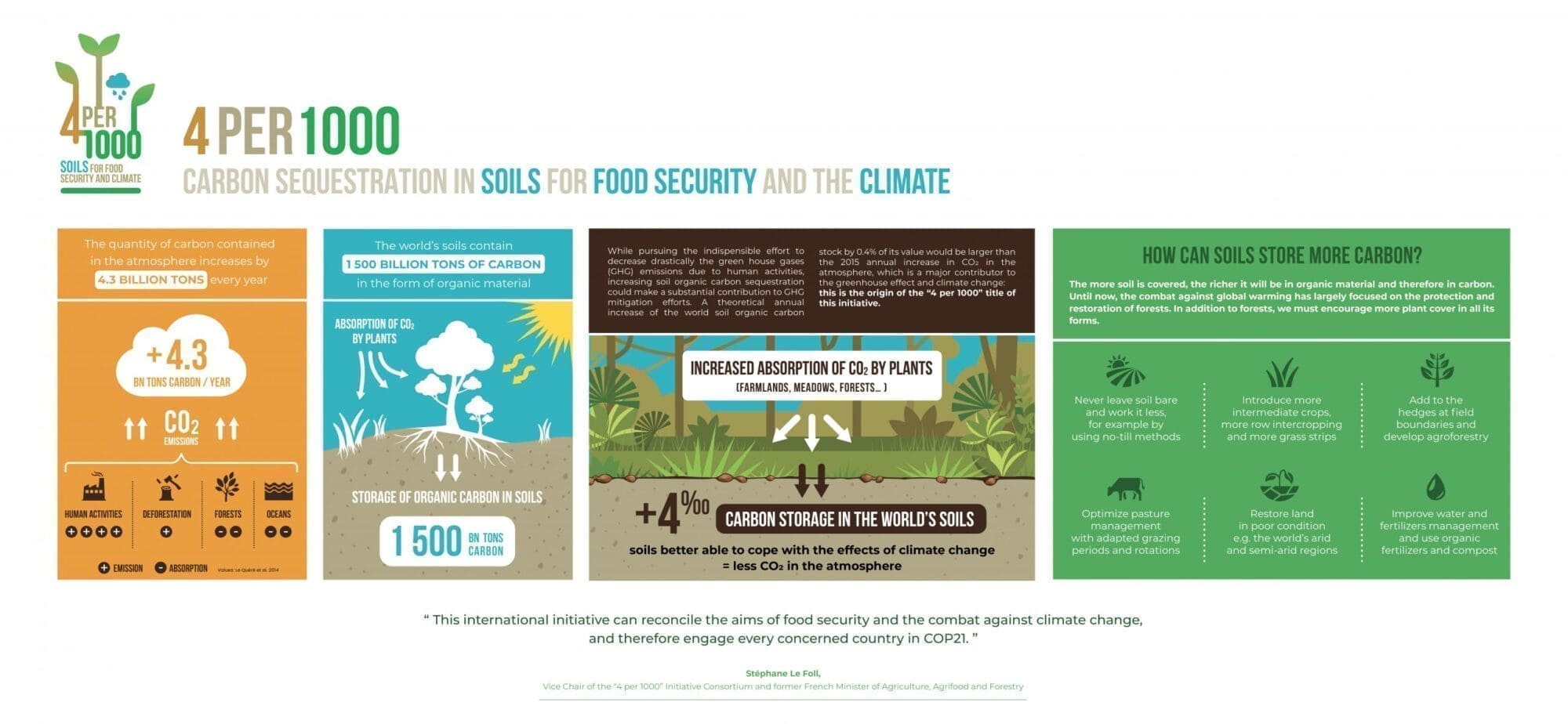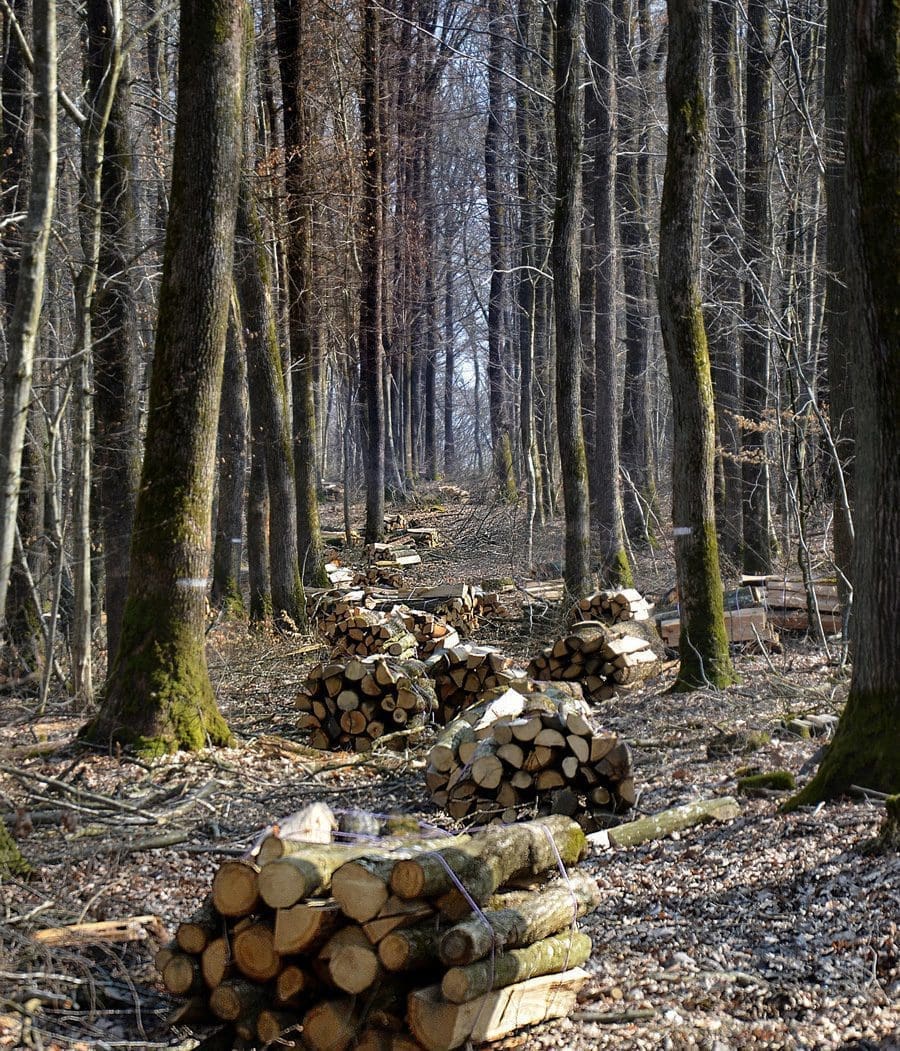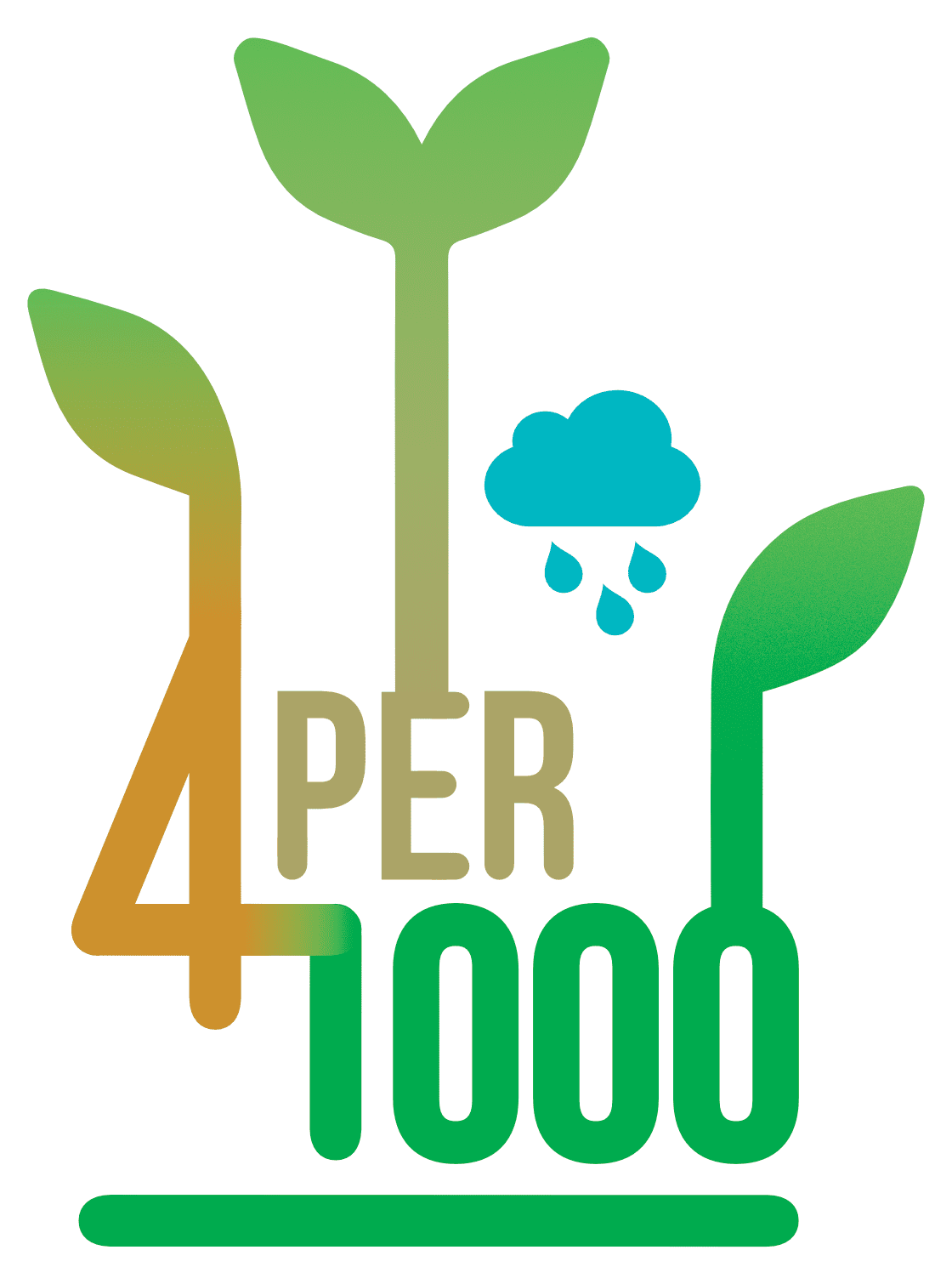
The international "4 per 1000" Initiative
The International “4 per 1000” Initiative, launched by France on 1 December 2015 at COP 21, aims to show that agriculture, and in particular agricultural soils, can play a crucial role in food security and climate change.
It consists of federating all voluntary actors from the public and private sectors (States, local authorities, companies, professional organisations, NGOs, research establishments, etc.) within the framework of the Lima-Paris Action Plan.
Based on solid scientific documentation, it invites all partners to promote/implement concrete actions for soil carbon storage.
Why the "4 per 1000" Initiative: Soils for Food Security and Climate?
It is well known that human activities emit huge amounts of carbon dioxide (CO2) into the atmosphere, which enhances the greenhouse effect and accelerates climate change.
But what is less well known is that every year, about 30% of this carbon dioxide is recovered by plants through photosynthesis. Then, when the plants die and decompose, living organisms in the soil, such as bacteria, fungi or earthworms, transform them into organic matter. This organic matter – rich in carbon – is essential to human nutrition because it retains water, nitrogen and phosphorus, which are essential for plant growth.
But it also represents an enormous potential for carbon storage: the world’s soils contain 2 to 3 times more carbon than the atmosphere. If the level of carbon stored by soils in the top 30 to 40 centimetres of soil increased by 0.4% (or 4‰) per year, the annual increase of carbon dioxide (CO2) in the atmosphere would be significantly reduced.
This growth rate of 4‰ per year in soil carbon stocks is not a normative target for each country, but a direction to follow.
This is what the “4 per 1000” Initiative – Soils for Food Security and Climate – proposes.

The "4 per 1000" Initiativein one diagram

The key roleof agriculture and forestry

Agriculture and forestry contribute to the fight against climate change.
They contribute to this fight in particular through agricultural and forestry soils. Increasing the amount of carbon in agricultural and forest soils contributes to:
- stabilising the climate (mitigation of CO2 in the atmosphere)
- adapt to ongoing climate change
- ensuring global food security – i.e. providing sufficient and good quality food.
A priority:The health of agricultural and forestry soils
A simple fact:
- 75% of soils are already degraded to varying degrees due to human activity – and climate change is accelerating this process [source FAO – 2020]. [source FAO – 2020].
- Soil degradation has a negative impact on food security and family farming. Our ability to feed 9.8 billion people in 2050 in a context of climate change will depend, among other things, on our ability to keep soils alive.
Why are soils important for the climate?
Source: French Ministry of Agriculture, Food and Forestry, Winter 2015-2016
